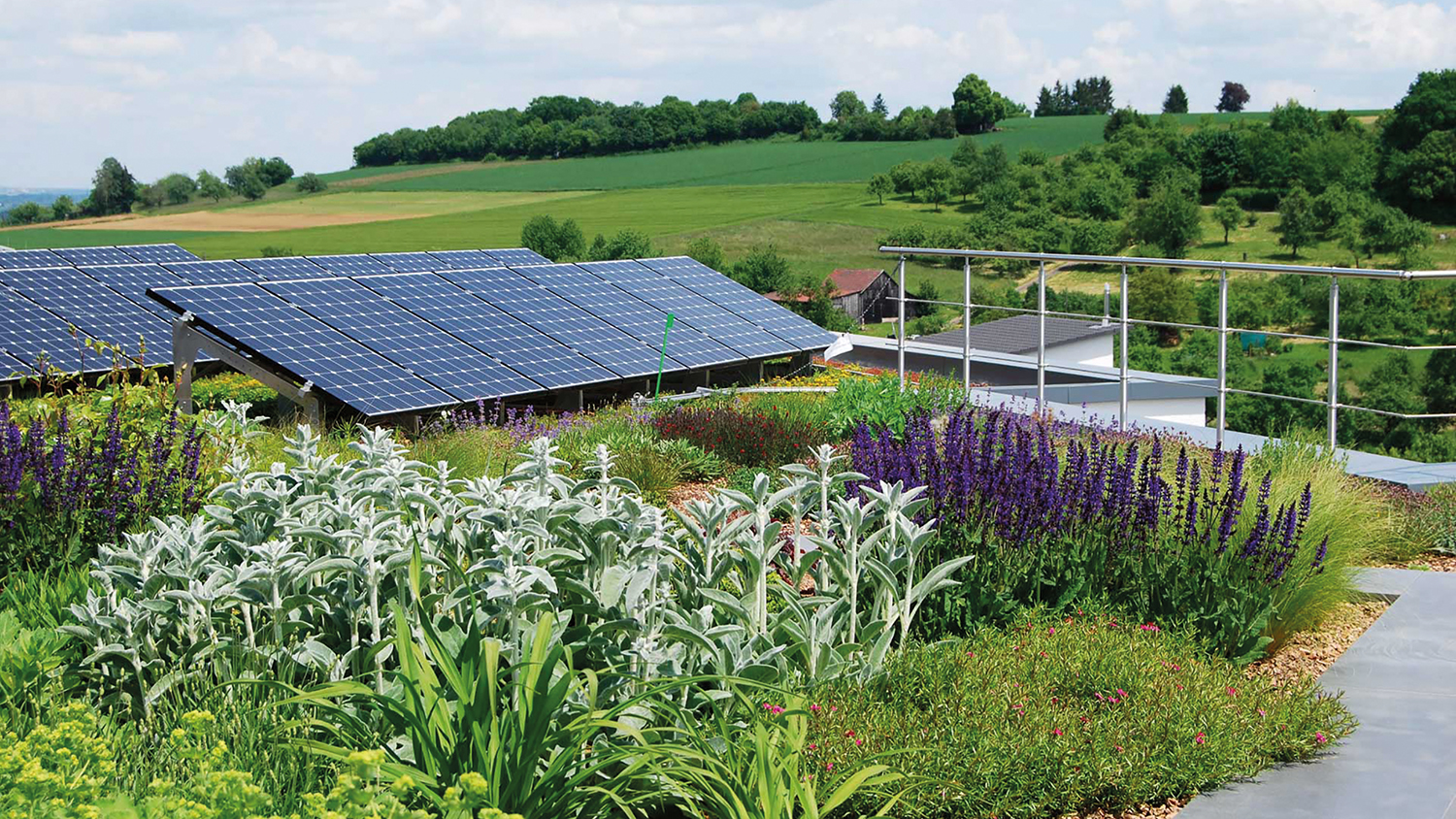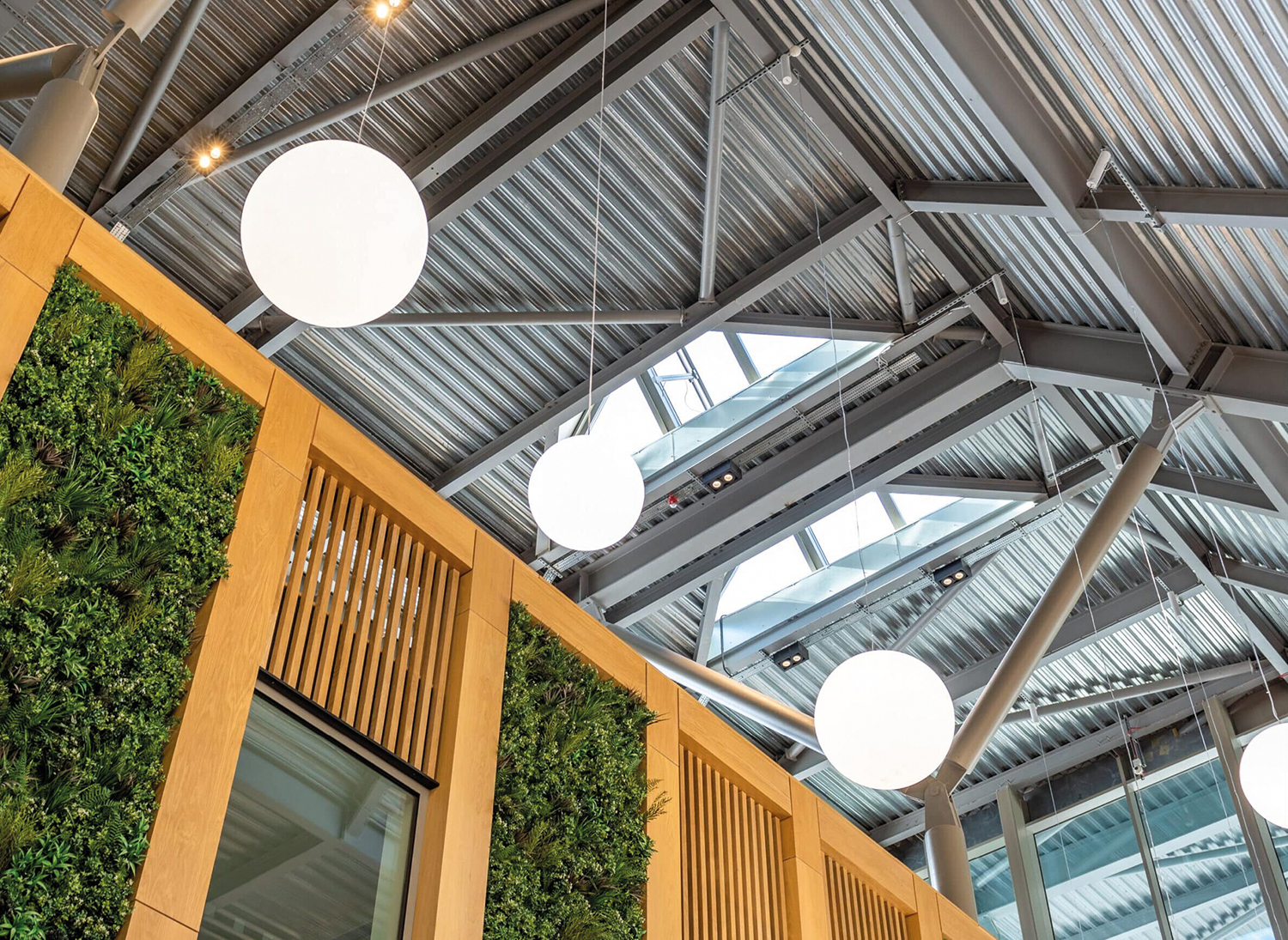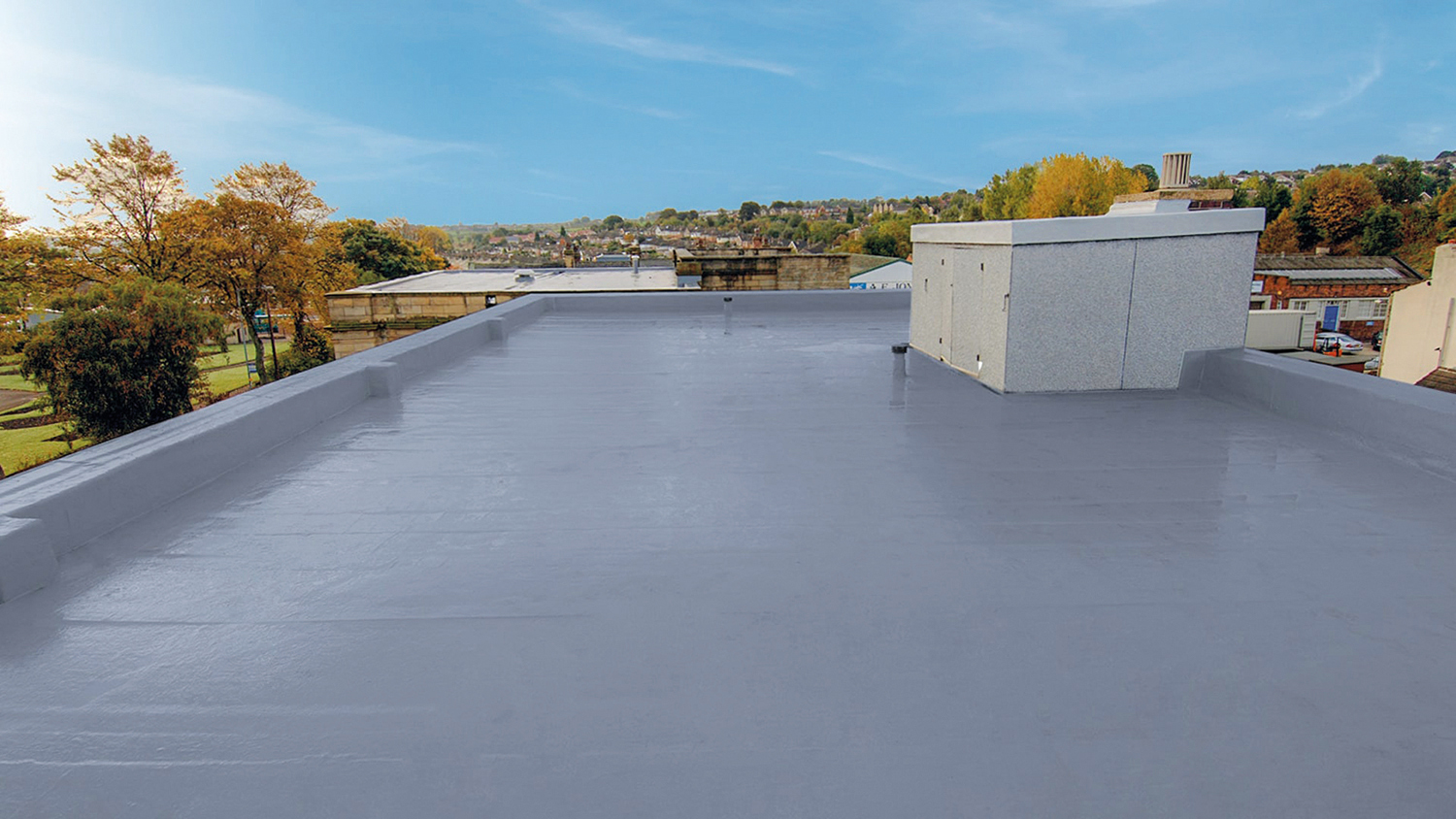
This CPD, in association with Garland UK, explores sustainable roofing systems. It examines current building requirements, how carbon emissions occur in construction and how sustainable roofing systems will support a project’s carbon reduction initiatives.

Early decisions on a roofing project can significantly lower the embodied and operational carbon output for a building. Some sustainable roofing systems can also help to reduce the operational costs of the building over its lifetime. There has been a significant shift in how proactive companies adopt environmental and sustainable change. Before, the conversation was often led by budget but increasingly long-term sustainable targets matter to clients.
Legislation and Building Regulation requirements
On 27 June 2019, the UK became the first major economy to pass laws to end its contribution to global warming. It commits it to a 68% reduction by 2030, a 78% reduction by 2035 and becoming net zero by 2050. To help achieve these targets, there have been significant changes to the current Building Regulations, enacted on 15 June 2022.
A new Approved Document O (overheating in buildings) has been introduced, as well as major updates to Part L (fuel and power) and Part F (ventilation). These changes mandate that non-domestic buildings achieve an average of 27% reduction in carbon emissions relative to the 2013 regulations, and domestic buildings must achieve a 30% reduction.
This will be followed in 2025 by introducing the Future Homes and Buildings Standard. This is expected to increase this carbon reduction to around 75%.
In addition, Approved Document B (fire safety) is always essential to keep in mind when carrying out any roofing project. Roofing systems are required to resist the spread of flame on its surface and the penetration of any flame through the build-up of the specified system. To assess how a roofing system performs during external exposure to fire tests (CEN/TS 1187:2012), EN 13501-5 provides the fire performance classification.
It is always best practice to choose a roofing system that achieves the highest classification rating of Broof(t4), allowing unrestricted use on any building with relevant boundaries. This is achievable for all the sustainable roofing systems covered in this CPD.
Carbon in buildings
To understand where there is potential to decrease carbon emissions, it is first essential to know where these emissions occur during the lifespan of a building.
Embodied carbon
Embodied carbon refers to the CO2 emitted in producing physical materials associated with construction. This includes the extraction and refinement of raw materials, the manufacturing of products from those materials, transport, the construction of the structure, and the deconstruction and disposal of materials at the end of life. It can be considered the carbon footprint of construction materials.

With roofing projects, the best way to improve the embodied carbon output of a roof is to increase the length of time that it is usable. The longer the life cycle of your chosen roofing solution, the more significant the improvement in its embodied carbon emissions.
Buildings are typically designed to last 60 years, so it is essential to look ahead and choose a roofing solution that utilises products that can get as close to this benchmark as possible. A longer life cycle also reduces capital expenditure and allows for better budgetary planning by minimising future refurbishment or replacement needs.
Taking into account the life cycle of the products used on a project, and therefore the reduced embodied carbon, is also an intrinsic part of a BREEAM evaluation, where life cycle costing is utilised to assess the sustainability of a project providing for up to four credits.
Operational carbon
Operational carbon refers to the total carbon emitted from all energy sources to keep a building warm, cool, ventilated, lighted and powered.
Both newbuild and refurbishment roofing works provide an opportunity to reduce operational carbon outputs drastically. Constructing a roof with good insulation (Building Regulations require that all non-dwelling, warm, low-slope and pitched roofs must achieve a U-value of 0.18 and 0.16 W/m2K, respectively), not only improves its thermal efficiency, but also has the benefit of improving the energy efficiency of the building as a whole. Not only does this reduce the operational carbon output, but it also reduces the running costs of the building.
Further improvements in energy efficiency can be provided through the increased use of rooflights to provide more natural daylight, as well as the installation of photovoltaic solar panels. Consider green roofing to help reduce operational carbon further.
Whole-life carbon
Taking both embodied carbon and operational carbon into account is essential. Together they provide the whole life carbon of a building. This should always be considered to provide the most sustainable choices for roofing projects.
Taking a whole life carbon approach will help to guide the big decisions, which in many cases can be whether to remove a roof and start again or refurbish the existing system.
At the end of your roof’s lifespan, you should endeavour to refurbish where possible, reuse what you can and recycle anything else.

The use of innovative materials and construction methods helps to support this goal. Many metal roof systems, for example, are 100% recyclable. Recycled metals can save as much as 90% of the embodied carbon compared to processing from metal ore. Metal cladding systems allow for installation of a new roofing system while leaving the existing roof in place, mitigating waste that has to go to landfill in the process, not to mention saving you additional costs.
Sustainable roofing systems
Modified bitumen membrane roofing Modified bitumen membranes certainly don’t sound sustainable, and there are undoubtedly other roofing materials that can be more environmentally friendly.
However, modified bituminous membranes can be considered when designing a sustainable roof because they are, in fact, 100% recyclable at the end of their natural life. In addition, bituminous membranes have long lifespans, which greatly reduce embodied carbon emissions and play a significant role when carrying out any life cycle costing exercises.
This long lifespan, typically 30 years or more, is achieved through the way the system is constructed. Modified bituminous systems utilise two layers of factory-manufactured SBS modified bitumen sheet material. They integrate with reinforcing mats consisting of polyester, fibreglass or a composite of the two, to form the membrane.
With multiple layers of membrane, you increase the performance of the whole system, increasing resistance to punctures and building movement, and having effectively two layers of waterproofing. Unlike single-ply options, a failure in one layer will not lead to water ingress into the roof substructure or the building itself.
Metal roofing Metal roofing systems are low maintenance and have a long lifespan, typically over 50 years. They can also encapsulate existing roofing structures that mitigate landfill waste, including toxic and hazardous waste such as asbestos.
The most eco-friendly aspect of these systems is their recyclability. For example, many metal roofs contain up to 40% recycled steel – and all the materials that comprise metal roofs are 100% recyclable at the end of their life. This is because metal can be recycled continuously without any of its key properties deteriorating. Factoring in the whole life carbon, metal roofs are one of the best options to consider for sustainable roof design.

Standing seam systems have distinct advantages over other metal roofing systems and will not compromise design choices, aesthetics or functionality. The weathering sheet does not need a penetrative fixing and there are no transversal laps. This means there is no means by which water can enter the building.
Standing seam systems also lend themselves to more complex projects as the sheets can be curved and tapered, giving the architect design freedom.
Green roofing Green roofing incorporates a growing medium wholly covered with vegetation. This is installed on top of a waterproofing membrane which can include additional layers such as a root barrier and drainage and irrigation systems.
Systems usually incorporate a pebble band or paving around the perimeter of the green roof. This acts as both vegetation and fire barrier resisting the spread of flame.
Green roofs not only improve a roof’s thermal performance and energy efficiency, but also capture carbon dioxide and help with urban cooling through evapotranspiration. A study (Kuronuma et al, 2018) concluded that an extensive green roof has an approximate carbon payback time of 6.4-15.9 years.
Green roofs help with sustainability in other ways. They reduce stormwater runoff, improve air quality and boost biodiversity. Properly maintained, they have an exceptionally long lifespan, further helping to reduce embodied carbon.
When incorporating a green roof into your design, it is vital to consider the mental health benefits, such as stress reduction, and physical health benefits, such as cleaner air.
For sustainable roofing design, extensive green roofs are typically preferred for their more modest structural load, reducing the mass of materials needed for construction and embodying less carbon.
Extensive green roofs can be used on flat or sloped roofs for optimum design flexibility. There are some limitations on planting selection due to the shallow growing medium.
Solar photovoltaics (PV) One of the most obvious benefits of solar PV systems is that from the moment of installation they start saving money for the operational running costs of a building. Thus reducing the amount of power purchased from the National Grid. This also helps decrease operational carbon emissions as the power is generated from a renewable source.
The technology used to manufacture solar cells and photovoltaic arrays has advanced dramatically in recent years, producing greater power yields for a longer time. High-performance brands will still generate at least 80% of the initial output 25 years after installation.
Solar PV systems are also rapid to install and easy to maintain. However, there can be some hesitancy to install them, given the upfront costs. With the government’s super-deduction tax relief available until March 2023, commercial businesses have more opportunities to consider solar panels for all roofing projects.
Even without tax relief, solar PV has one of the fastest returns on investment of any onsite renewable energy generation. It could potentially be in as little as four years and typically within six years.
Mark Fisher is head of technical at Garland UK.





